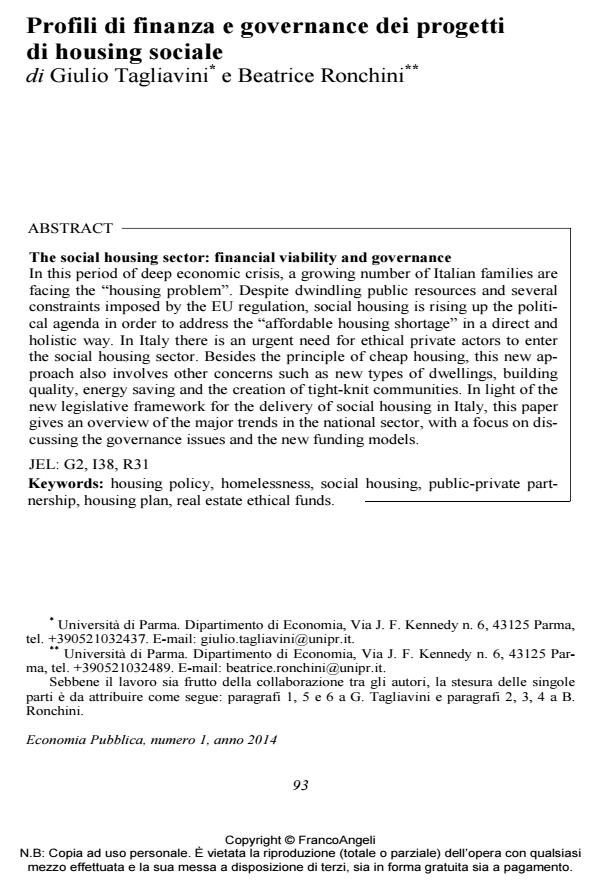The social housing sector: financial viability and governance
Journal title ECONOMIA PUBBLICA
Author/s Giulio Tagliavini, Beatrice Ronchini
Publishing Year 2014 Issue 2014/1
Language Italian Pages 16 P. 93-108 File size 168 KB
DOI 10.3280/EP2014-001005
DOI is like a bar code for intellectual property: to have more infomation
click here
Below, you can see the article first page
If you want to buy this article in PDF format, you can do it, following the instructions to buy download credits

FrancoAngeli is member of Publishers International Linking Association, Inc (PILA), a not-for-profit association which run the CrossRef service enabling links to and from online scholarly content.
In this period of deep economic crisis, a growing number of Italian families are facing the "housing problem". Despite dwindling public resources and several constraints imposed by the EU regulation, social housing is rising up the political agenda in order to address the "affordable housing shortage" in a direct and holistic way. In Italy there is an urgent need for ethical private actors to enter the social housing sector. Besides the principle of cheap housing, this new approach also involves other concerns such as new types of dwellings, building quality, energy saving and the creation of tight-knit communities. In light of the new legislative framework for the delivery of social housing in Italy, this paper gives an overview of the major trends in the national sector, with a focus on discussing the governance issues and the new funding models.
Keywords: Housing policy, homelessness, social housing, public-private partnership, housing plan, real estate ethical funds
Jel codes: G2, I38, R31
Giulio Tagliavini, Beatrice Ronchini, Profili di finanza e governance dei progetti di housing sociale in "ECONOMIA PUBBLICA " 1/2014, pp 93-108, DOI: 10.3280/EP2014-001005